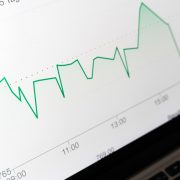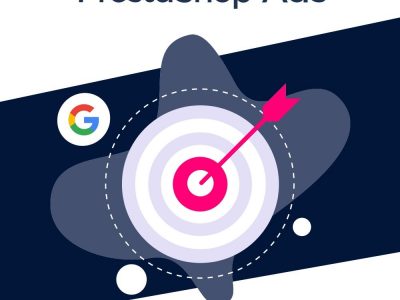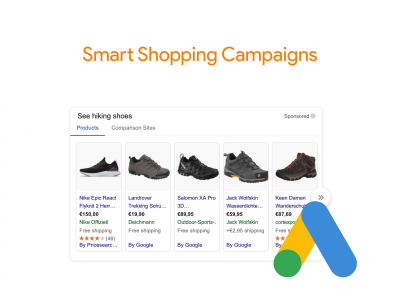The coronavirus (COVID-19) is currently at the centre of our daily lives as the epidemic has tragically spread its web across the globe.
COVID-19 is a health disaster, but it is also a real financial virus for companies, temporarily paralysing the global economy.
While the concerns of the people are justifiably still in the present and in overcoming the crisis, it is nevertheless worth taking a look into the future. In the drastic change that the crisis brings with it, there is also an opportunity for long-term and positive effects on the economy, technology and social behaviour.
Online trade in particular is largely in focus as a winner and also benefits in the long term from a change in purchasing behaviour. Please note that your customers are now also in an exceptional situation. You should ask yourself the following questions:
- Where do I pick up the customer?
- How has consumer behaviour changed?
- Which channels work better now, which worse?
- Which steps are necessary?
Unusual situations require unusual measures. Innovative approaches can ultimately determine whether a company emerges from the crisis stronger than before.
Analysis of the situation – short strategy overview
Companies that have been badly affected:
(Focus is on the continued existence of the company)
- Only invest in marketing that generates cash flow in the next 30 days.
- Identify the most profitable products and customers. Run targeted campaigns here.
- If necessary, set new goals and analyze the achievability.
Companies, with no predictable outcome:
(Not yet severely affected, but uncertain about progress)
- Invest in short to medium term marketing activities.
- Identify the most profitable products and customers, but also keep an eye on medium-term prospects.
- Pay attention to your campaigns. Well-maintained campaigns put you back in position after the crisis.
Companies that have to reposition themselves:
(The changed buying and usage behaviour requires a new orientation)
- Analyze how the strategy can be adapted to the changed behavior and business model.
- Use upper-funnel campaigns to reach new target groups.
- Promote products and services through appropriate channels.
- Adapt your KPIs to the situation.
Companies that clearly benefit:
(products are in higher demand)
- Find new ways to win new customers.
- Inform customers quickly about availability and delivery times
- Use new advertising channels.
The following chart shows the analysis of which areas are most affected by the corona crisis:

Food
- Adjust your advertising budget to the increased demand of available stocks
- Make sure that campaign budget is not limited
- Reach new target groups who have not previously shopped online
- Ensure delivery capability and prepare for further increases
- Consider whether you can raise prices
Furniture & Household
- Increase turnover through stock sales
- Reach new target groups that have not previously purchased online
- Adjust the advertising budget to the increased demand
- Do not advertise products too much when stocks are low
Consumer electronics
- Advertise more products for the home office
- Electronic entertainment products are the answer to limited recreational opportunities
Fashion & Beauty
- Partially increased sales figures, as customers are at home
- Increasing demand is expected especially in the fashion sector due to the change of season
Home & Garden
- Adapt advertising budget to increased demand
- Make sure that campaign budget is not limited
- Reach new target groups that have not previously purchased online
- Consider whether you can charge higher prices for your products
Healthcare & Pharmaceuticals
- Take advantage of the high demand for disinfectants, gloves, hygiene products of all kinds
- Fear of scarcity creates a huge demand for medical hygiene products
Sales potential
People now spend much more time at home and on the Internet. Particularly offerers of Entertainment and home and garden profit at present strongly, because the spring change in the dwelling and the garden season are opened now in former times. Retailers should address new target groups with upper-funnel campaigns. However, if there are delivery difficulties in the foreseeable future, they should not invest heavily in new customer acquisition.
Reports are already coming in of companies drastically reducing or completely discontinuing their spending. A quarter of US marketers, for example, are taking a break with advertising spending, according to a current IAB survey. But to take your foot off the accelerator now may not be the right decision.


The reason for the falling CPCs is obvious: Google and Facebook market their reach with auction-based billing models. When many companies freeze their budgets, the cost-per-click for marketing executives who continue to participate in the auction drops – especially as inventory increases at the same time as more people are online. In North America and Western Europe, the cost per click on Facebook has fallen by about half since December 2019. By contrast, prices are already rising again in East Asia, where the pandemic has already passed its peak. Online merchants can now reach their audience at cheaper CPCs and smart content strategies.
What to do now – and what should merchants not do?
It is not possible to make a generally valid statement about what merchants should currently do on Google and Co. Countless variables, such as company size, budget, target group, etc., must be taken into account and, in addition, the development around the corona virus is just turning current requirements upside down.
A few basic principles must nevertheless be observed or considered.
Marketing measures
- identify potential at an early stage and manage SEA campaigns more granularly Rearrange or even reduce the budget at product group level if no conversions are generated. It would also be advisable to advertise particularly competitive products with best prices more strongly. This is where emarketing’s smart filters can help. Campaigns can run on the basis of different product filters such as best price, top performer, only converting products, etc. and thus prevent marketing budget from being burned.
Downgrade non-performing product groups and pause product groups with delivery bottlenecks. Push product groups that currently have a very high demand.
- avoid using the word “corona” in the shop, otherwise you run the risk that the domain will be blocked due to health-related context due to a violation of Google Ads advertising guidelines.
- ad placements in social networks are particularly interesting for online merchants. Due to the higher activity of the users more reach can be achieved.
- a structured, continuous analysis of your own situation and market is the most important starting point.
- adapt your advertising messages. Respond to users’ concerns and wishes and draw on current themes without using the crisis to advertise. Adapt your messages in the ads and on landing pages. Delivery times, availability and safety measures are important issues for users at the moment.
- do not forget about the importance of adding positive reviews. During the coronavirus, online reputation management is as important as ever. To provide the right service or product for people during a stressful time like this it is likely to be rewarded with a glowing review.
Ensure business continuity
- First of all, online shops have to ensure the supply by suppliers. Through continuous exchange with the suppliers, possible delivery delays or even delivery bottlenecks can be communicated in time.
- the speedy and secure dispatch must also be ensured. An investment in a service provider who can guarantee to deliver the goods reliably to the customer is necessary. Otherwise, the rate of returns will increase, as customers are forced to order the goods elsewhere.
Improve usability
- the fast and uncomplicated flow of customers through to the conclusion of the purchase is a priority The customer wants the goods and this as quickly and safely as possible. Design the shop to be user-friendly and with as few steps as possible until check-out. Doing without obligatory customer accounts can be just as promising.
- the performance of the shop should be especially good when accessed via mobile devices. Tracking tools can have a negative effect on the speedy processing of purchases given the current network load.
- customers are looking for information. Check that the data in your shop is up-to-date and correct.
Advertising – now even easier
For online merchants who are already advertising this will be especially exciting now. Google wants to help and support retailers in the current crisis. Advertisers should now be able to supplement their paid campaigns with free entries. Already next week, free Google Shopping entries will be available in the USA. The aim is to expand this globally by the end of the year. What does this mean in concrete terms?
This Google Shopping measure enables online merchants to significantly increase their reach free of charge. Merchants for whom the margin aspect of Google Shopping was previously not attractive will now also list their products.
If you already have active Google Shopping ads, you do not need to do anything else. The paid campaigns will be extended by free listings, you only have to activate “surface across Google” in the Merchant Center. For new users, Google plans to reorganize the onboarding process accordingly in the coming weeks and months.
For merchants who wants to get the most out of their advertise budget and work more granular, emarketing’s cloud-based solution is ideal. emarketing can be used free of charge and provides merchants with clear but profound tools to use their marketing budget and resources as efficiently as possible. The software is optimal for a good data feed and allows analysis of the own KPIs as well as the direct competition. The software offers plugins for every common shop system like Shopify, PestaShop, Plentymarkets, WebStollen, JTL, Shopware and so on.
Set up targeted campaigns that only advertise best price products or expand into other markets. Advertise without costs – get out of the crisis as a profiteer. Sign up in just 2 minutes! In case you need more information or need help with the set up, visit our support page or contact us after the sign up via chat in your dashboard.













